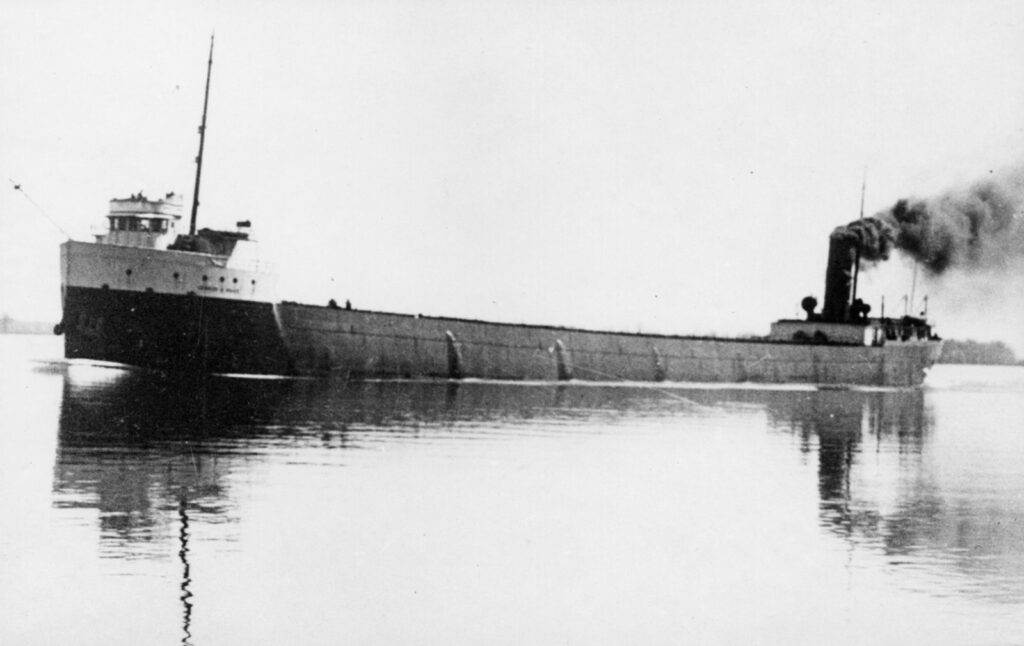The Great Lakes, often painted with images of serene beauty and tranquil waters, have a darker side – a history marked by storms of immense power and devastation. In 1913, a ferocious tempest swept across these seemingly placid waters, leaving a trail of destruction in its wake. This historic event, known as the “Great Storm of 1913” or the “Freshwater Fury,” forever etched its mark on the Great Lakes maritime history.
The Fury Unleashed: The Storm’s Wrath
In early November 1913, a unique combination of weather patterns converged to create a perfect storm. A low-pressure system moved across the Great Lakes, colliding with frigid Arctic air from the north and warm, moist air from the south. The result was a monstrous storm that unleashed hurricane-force winds, blinding snow squalls, and towering waves.
The storm raged for three days, from November 7th to 10th, relentlessly battering the Great Lakes and the surrounding communities. Winds gusted up to 90 mph, waves surged to heights of 35 feet, and visibility was reduced to near zero. It was a meteorological maelstrom that caught many ships unprepared.
The storm’s impact was widespread and devastating. On land, buildings were damaged, trees were uprooted, and power lines were downed. But the most significant destruction occurred on the water. Twelve major ships were lost, and countless others were damaged. It is estimated that over 250 sailors perished in the storm, making it the deadliest maritime disaster in Great Lakes history.
Shipwrecks of the Great Storm: Stories of Loss and Survival
The Great Storm of 1913 left behind a haunting legacy of shipwrecks scattered across the Great Lakes. Each wreck tells a tale of bravery, tragedy, and the indomitable spirit of those who battled the elements.
Among the notable shipwrecks were the Charles S. Price, a 524-foot steel freighter that sank in Lake Huron with all 28 crew members on board; the Regina, a Canadian steamer that also went down in Lake Huron with 20 lives lost; and the Wexford, a 270-foot steel steamer that disappeared in Lake Huron with no survivors.
The human cost of the storm was immense. Families were shattered, communities mourned, and the maritime industry suffered a significant blow. Yet, amidst the tragedy, there were also remarkable stories of survival. Some sailors managed to cling to wreckage for hours, battling hypothermia and exhaustion, until they were rescued. Others were fortunate enough to be aboard ships that weathered the storm, albeit with significant damage.
Aftermath and Recovery: Lessons Learned
The aftermath of the Great Storm was a time of mourning and reflection. Communities rallied to support the families of those lost, and salvage operations began to recover the sunken vessels. The storm also prompted a renewed focus on maritime safety, leading to improvements in weather forecasting, communication, and ship construction.
The Great Storm of 1913 serves as a stark reminder of the power of nature and the importance of preparedness. It also underscores the resilience of the human spirit in the face of adversity. The stories of those who survived, and the efforts of those who worked tirelessly to recover the lost, are a testament to the enduring human capacity for hope and perseverance.
Exploring the Shipwrecks: Windows into the Past
Today, the shipwrecks of the Great Storm of 1913 offer a unique glimpse into maritime history. These submerged time capsules preserve the technology, culture, and stories of a bygone era. Through responsible exploration and preservation, we can continue to learn from these wrecks and honor the memory of those who lost their lives.
At Double Action Dive Charters, we are passionate about sharing the stories of these historic shipwrecks. We offer guided dive trips to some of the most fascinating wrecks in the Great Lakes, including the Regina, a victim of the 1913 storm. Our experienced dive guides provide in-depth knowledge of each wreck’s history and the unique challenges and rewards of exploring these underwater sites.
The Light Still Shines
The Great Storm of 1913 left an indelible mark on the Great Lakes region. It was a tragedy that claimed hundreds of lives and forever altered the course of maritime history. But from this darkness, a beacon of light emerged. The storm’s legacy spurred advancements in safety and navigation, ensuring that future generations of sailors and divers could explore these waters with greater confidence.
Today, the shipwrecks of the Great Storm serve as a powerful reminder of the past, offering a unique opportunity to connect with history and experience the awe-inspiring beauty of the underwater world. So, join us on a journey into the depths and discover the stories that lie beneath the waves.

